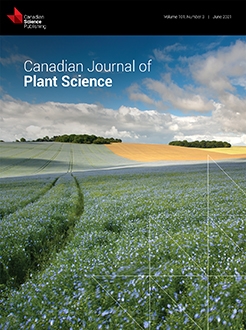The experiment was conducted in the Abi Al-Khaseeb orchard, Basrah, Iraq, during the 2019 season, on date palm (‘Hillawi’). The effect of foliar nano-fertilizer on the response of the growth and fruit ripening rate was positive. Adding nano-fertilizer to the annual date palm fertilization program improved growth and increased production. A comparison was done of foliar-applied NPK (traditional; 1 and 2 g·L−1), nano-fertilizer, and a combined treatment. The results revealed that the treatment of traditional foliar fertilizer and nano-fertilizer together increased the weight of fruit and bunches, water content, indoleacetic acid, and gibberellic acid relative to other treatments. Nano-fertilizers (1 g·L−1) led to an increase in fruit ripening rate, dry mass, total soluble solids, activity of the enzymes peroxidase and superoxide dismutase, and abscisic acid content. The leaflet protein expression shows that the appearance of protein bands 1 to 5 and 6 was upregulated by the control and traditional fertilizer, whereas the protein bands 6 and 7 were downregulated under nano-fertilizer. Hierarchical cluster analysis of proteins in the leaf in response to traditional fertilizer and nano-fertilizer showed two distinct clusters. The use of nano-fertilizer alone leads to the acceleration of fruit ripening, while the fruit production is increased using foliar nano-fertilizer with traditional fertilizer.
How to translate text using browser tools
2 October 2020
Foliar nano-fertilization enhances fruit growth, maturity, and biochemical responses of date palm
Hussein J. Shareef,
Rashid A. Al-Yahyai,
Alaa El-Din K. Omar,
Wan Arfiani Barus
ACCESS THE FULL ARTICLE
It is not available for individual sale.
This article is only available to subscribers.
It is not available for individual sale.
It is not available for individual sale.

Canadian Journal of Plant Science
Vol. 101 • No. 3
June 2021
Vol. 101 • No. 3
June 2021
Ascorbic acid
cluster analysis
fruit ripening
indoleacetic acid
protein pattern




